First Aid and Emergency Care: Life-Saving Tips and Techniques
In light of the current public health emergency, it is important to understand the impact that this pandemic has had on our lives. From the extreme health risks and economic impacts to the disruption of everyday routines and the way we communicate, this emergency has led to unprecedented changes around the world. Through understanding these changes, we can take the necessary steps to protect ourselves and our communities.
OUR MOST COMMON TOPICS
Anemia

An incurable disease where the muscles around the lungs tighten due to the swelling of lining around the lungs. The person encounters difficulty breathing as an excessive amount of mucus builds up in the lungs. In other words, asthma is a chronic respiratory condition that affects the airways, causing them to become inflamed, swollen, and narrowed. It affects an estimated 25 million people in the United States alone and is one of the most common chronic illnesses among children. When exposed to triggers such as pollen, dust mites, mold, or pet dander, individuals with asthma may experience increased symptoms including coughing, chest tightness, shortness of breath and wheezing. Asthma can cause both minor and severe health issues such as having difficulty sleeping or participating in physical activities. Severe cases can lead to hospitalization or even death if not managed properly. Early diagnosis and treatment are key to managing and controlling asthma symptoms so those affected can continue living healthy lives. Click for more information.
Abdominal Pain

Abdominal pain is a common symptom that affects people of all ages and can range from mild discomfort to severe pain. Have you ever experienced a sharp pain in your stomach that left you feeling uneasy and anxious? If so, you are not alone. Abdominal pain can be caused by a variety of factors, including digestive issues, infections, and even stress. In this article, we will explore the causes of abdominal pain, how to identify the severity of your pain, and the various treatment options available to alleviate your discomfort. You will have a better understanding of abdominal pain and how to manage it effectively. Click to find out more.
AMPUTATION

Amputation is the surgical removal of all or part of a limb or extremity such as an arm, leg, foot, hand, toe, or finger. It is typically done to remove damaged or diseased tissue that cannot be saved or to prevent the spread of an infection or disease to other parts of the body. Amputation may also be necessary in cases of severe injury, such as a traumatic accident, in which the affected limb is severely damaged and cannot be repaired. Amputation can be a traumatic and life-changing event for the person undergoing the procedure. It can result in physical and emotional challenges, such as phantom limb pain, difficulty with mobility and activities of daily living, depression, and anxiety. Rehabilitation and support from healthcare professionals, family, and friends are critical to help the person adjust and cope with the changes. Click to find out more.
Asthma

An incurable disease where the muscles around the lungs tighten due to the swelling of lining around the lungs. The person encounters difficulty breathing as an excessive amount of mucus builds up in the lungs. In other words, asthma is a chronic respiratory condition that affects the airways, causing them to become inflamed, swollen, and narrowed. It affects an estimated 25 million people in the United States alone and is one of the most common chronic illnesses among children. When exposed to triggers such as pollen, dust mites, mold, or pet dander, individuals with asthma may experience increased symptoms including coughing, chest tightness, shortness of breath and wheezing. Asthma can cause both minor and severe health issues such as having difficulty sleeping or participating in physical activities. Severe cases can lead to hospitalization or even death if not managed properly. Early diagnosis and treatment are key to managing and controlling asthma symptoms so those affected can continue living healthy lives. Click for more information.
Athlete’s foot

Athlete’s foot is a common fungal infection that affects the skin on the feet. It is caused by a group of fungi called dermatophytes, which thrive in warm and moist environments. The symptoms of athlete’s foot include itching, burning, and stinging sensations on the feet. It can be treated with over-the-counter antifungal creams and ointments and prevented by taking simple precautions such as keeping the feet clean and dry, wearing breathable shoes and socks, and avoiding walking barefoot in public places. If you have symptoms of athlete’s foot that do not improve with over-the-counter treatments, or if you develop a fever or other signs of infection, you should see a healthcare provider. Click for more information.
BACK PAIN
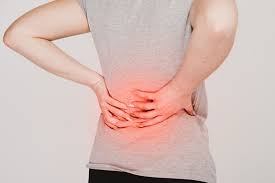
Back pain is a common health problem that can be quite debilitating and cause significant disruptions in daily life. It is estimated that over 80% of adults will experience back pain at some point during their lifetime. This type of pain can range from mild discomfort to severe agony, and can often become chronic if left untreated for long periods of time. Back pain affects people of all ages, genders, and activity levels. It can be caused by injuries, poor posture, or wear and tear on the spine due to aging; however, many cases are idiopathic, meaning the exact cause is unknown. Treatment options vary depending on the severity of the back pain, but usually involve physical therapy, lifestyle modifications such as exercise and weight loss, rest and relaxation techniques, medications to reduce inflammation and swelling, or even surgery in more extreme cases. Click for more information.
BITES AND STINGS

Bites and stings are a common occurrence in nature, with many different kinds of animals capable of inflicting a painful experience. Insects such as wasps and bees have stingers that can inject venom into the skin, while spiders, snakes, and scorpions may also bite their victims. Bites from ticks and mosquitoes can cause infections or other diseases, while jellyfish stings may result in severe allergic reactions and even death. In addition to physical discomfort, bites and stings can cause psychological distress due to the fear of paralysis or other serious health effects. Fortunately, there are numerous treatments available for both bites and stings that can reduce pain, inflammation, and the risk of infection. Click to find out more.
BURNS

Burns are one of the most common types of injuries that people can experience. They can happen in a variety of situations, from cooking accidents to workplace incidents. Burns can range from minor to severe, and the treatment required can vary depending on the severity of the burn. In this article, we will explore the different types of burns, the symptoms associated with them, and the treatments available. You will have a better understanding of how to identify and treat burns, and how to prevent them from occurring in the first place. Click to find out more.
Cancer

Cancer is an insidious disease that affects millions of people around the world every year. It occurs when abnormal cells grow and divide uncontrollably, invading and destroying healthy tissue. In many cases, these rogue cells travel to other parts of the body where they can cause tumors or other malignant growths. Cancer can affect almost any part of the body, including organs such as the lungs, breasts, and prostate. Depending on its type and stage, cancer can be fatal in some cases. Fortunately, early detection and treatment are key in successfully fighting cancer and there has been tremendous progress in recent years in terms of treatments available for those affected by this disease. Click to find out more.
Casts
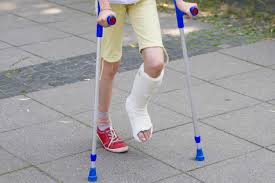
Devices used to support an injured bone in place while it heals. Casts, or orthopedic casts, are support structures used to immobilize broken or fractured bones. They are made from a strong, lightweight material such as plaster or fiberglass and can help keep bones in place while they heal. Casts come in a variety of shapes and sizes, depending on the area of the body being treated. They are generally applied by a doctor or healthcare professional and require regular check-ups to ensure the integrity of the cast and proper healing of the bone. Casts help provide support to an injured area, reduce pain and swelling, maintain joint alignment, promote healing of soft tissue injuries, and reduce any risk of further damage to the affected area. Additionally, they protect against external trauma while allowing for some freedom of movement by providing flexibility around certain joints. Click to find out more.
CATARACTS

Cataracts are a common eye condition that can cause significant vision problems. While they are most commonly associated with aging, they can also be caused by other factors such as genetics, diabetes, and smoking. The only way to treat cataracts is through surgery, but there are several things you can do to reduce your risk of developing them. If you are experiencing any symptoms of cataracts, it is important to see an eye doctor for an evaluation. With proper treatment and care, most people with cataracts are able to maintain good vision and quality of life. Click to find out more.
COLDS AND FLU

As the weather changes and temperatures drop, many of us find ourselves reaching for tissues and cough drops. Yes, it’s that time of year again: cold and flu season. While these illnesses may seem like an inevitable part of winter, there are steps we can take to protect ourselves and minimize their impact. In this article, we’ll explore the causes and symptoms of colds and flu, as well as some strategies for prevention and treatment. Specifically, we’ll discuss the importance of hand hygiene, the benefits of getting vaccinated, and some natural remedies that may help alleviate symptoms. You will be armed with the knowledge you need to stay healthy and happy this winter season. Click to find out more.
DANDRUFF

Dandruff is a common scalp condition that affects millions of people worldwide. It is characterized by the presence of white or gray flakes on the scalp and hair, which can be both embarrassing and uncomfortable. If you’re someone who has struggled with dandruff, you know how frustrating it can be to find a solution that actually works. We will be discussing the causes of dandruff, the different types of dandruff, and effective treatments for this condition. You will have a better understanding of dandruff and how to manage it effectively. Click to find out more.
Dehydration

Dehydration is a serious and potentially life-threatening condition that occurs when the body loses more fluids than it takes in. When the body does not have enough water, it can cause numerous adverse effects, such as dizziness, fatigue, headaches, confusion and even organ damage if left untreated. Dehydration can be caused by a variety of factors such as excessive sweating during physical activity or heat exhaustion, frequent urination due to diabetes or kidney disease, vomiting or diarrhea from illness or infection, or inadequate fluid intake due to poor diet. To avoid dehydration it is important to stay hydrated by drinking plenty of fluids throughout the day and maintaining a healthy lifestyle with regular exercise and adequate nutrition. Click to find out more.
DEEP VEIN THROMBOSIS

Deep Vein Thrombosis (DVT) is a serious medical condition that affects millions of people globally. It can be life-threatening if left untreated. DVT occurs when a blood clot forms in the deep veins of the body, usually in the legs. These clots can block the flow of blood through the veins and increase the risk of pulmonary embolism. Symptoms of DVT include swelling, pain and tenderness in the affected area, discoloration, warmth to touch and abnormal pulse or throbbing sensation. Risk factors for developing DVT include immobility, obesity, genetic factors and certain medications. If left untreated, DVT can lead to severe complications such as stroke or heart attack. Early diagnosis and treatment are crucial for managing this condition effectively. Click to find out more.
Depression

Depression is a serious mental health condition which involves poor mood and loss of interest in things. It affects millions of people around the world. It is a condition characterized by feelings of sadness, hopelessness, and worthlessness that can interfere with a person’s ability to function in everyday life. Symptoms can range from mild to severe and include changes in mood, thoughts, and behavior. People with depression may experience difficulty concentrating, sleeping or eating; have low energy levels; feel worthless or guilty; or even have suicidal thoughts. Depression can be caused by environmental factors such as trauma or abuse, but there are also genetic predispositions to depression. Treatments for depression vary depending on the severity of the condition, but often involve some combination of medication, psychotherapy, and lifestyle changes. By seeking professional help early on, individuals can improve their quality of life and minimize the impact of this debilitating illness. Click to find out more.
Diarrhea

Diarrhea is a common condition that affects people of all ages and can be caused by a variety of things. It is characterized by frequent, watery bowel movements, abdominal cramps, nausea, bloating and urgency to defecate. Diarrhea is usually the result of an infection or irritation of the digestive tract from eating contaminated food or drinks, certain medications, illness or stress. In severe cases it can lead to dehydration and even death due to electrolyte imbalances in the body. It is important to note that diarrhea can also be a symptom of more serious underlying conditions such as inflammatory bowel disease (IBD). It is therefore essential for individuals suffering from frequent bouts of diarrhea to seek medical attention in order to rule out any other potential cause. Click to find out more.
Diabetes Mellitus

Diabetes is a serious health condition that affects an estimated 463 million adults worldwide. It occurs when the body can no longer regulate its own blood sugar levels, leading to high levels of glucose in the blood. This can cause long-term damage to vital organs such as the heart, kidneys, eyes, and even the nervous system. People with diabetes often have to manage their condition by changing their diet, getting regular exercise, and taking prescribed medications or insulin injections. A range of lifestyle factors including stress, obesity and genetics are thought to contribute to a person’s risk of developing diabetes. The complications associated with this disease can be severe if not managed properly, so it is important for those at risk or living with diabetes to take preventative measures and receive adequate medical care. Click to find out more.
DISASTER

Disaster can bring significant disruption and destruction to communities, affecting not only physical infrastructure but also the health, security, and economic well-being of those affected. Such events can include natural disasters such as floods, fires, earthquakes, hurricanes and landslides; as well as human-made disasters such as accidental chemical spills, nuclear accidents, terrorist attacks or industrial accidents. Whatever their cause may be, disasters can have severe consequences that leave lasting psychological scars on affected populations in addition to the physical devastation. The impacts of a disaster are often widespread and far-reaching, often resulting in loss of life and property, displacement of persons and communities in need of immediate aid such as food, water and medical supplies. Furthermore, the social and economic implications for a nation after a disaster can be equally devastating and long-lasting. Therefore, it is vital for governments to have comprehensive plans in place to mitigate risk and respond quickly when a disaster strikes in order to save lives and limit damage. Click for more information.
DRY MOUTH

Do you ever feel like your mouth is as dry as the Sahara Desert? If so, you’re not alone. Dry mouth, also known as xerostomia, is a common condition that affects millions of people worldwide. While it may seem like a minor inconvenience, untreated dry mouth can lead to a host of dental and medical problems. We will explore the causes and symptoms of dry mouth, as well as discuss the potential complications that can arise from untreated xerostomia. Finally, we’ll provide some tips for managing dry mouth and improving your overall oral health. So, let’s dive in and learn more about this common condition. Click for more information.
DRY SKIN

Dry skin is a common skin condition that occurs when your skin loses its natural moisture and becomes rough, scaly, and itchy. It can occur anywhere on your body, but it’s most commonly found on your hands, arms, legs, and face. Do you often find yourself struggling with dry, flaky skin? You’re not alone. While it may seem like a minor inconvenience, it can lead to discomfort, irritation, and even skin damage if left untreated. In this article, we’ll be discussing the causes of dry skin, the best ways to prevent it, and the most effective treatments available. By the end, you’ll have a better understanding of how to keep your skin healthy and hydrated. Click to find out more.
EAR ACHE

The ear is the organ of hearing and balance. It is divided into three main parts: the outer ear, the middle ear, and the inner ear. Overall, the ear is a complex and highly specialized organ that plays a crucial role in our ability to hear and maintain our balance. Earache is a common condition that can cause pain and discomfort in the ear. It can be caused by a variety of factors, including infections, injuries, and inflammation. Some of the common symptoms of earache include pain in the ear, difficulty hearing, discharge from the ear, and a feeling of fullness or pressure in the ear. Click to find out more.
EMERGENCY CARE

An emergency is a potentially dangerous or life-threatening situation that requires immediate attention and action. An emergency is something serious that requires urgent medical attention. Emergencies can vary greatly in scope and severity, ranging from medical emergencies like heart attacks to natural disasters like hurricanes. In times of crisis, people must be ready to take immediate and appropriate steps to protect themselves, their loved ones, and their property. Emergency responders such as firefighters, paramedics, police officers, and medical personnel are often dispatched to the scene of an emergency in order to provide assistance and restore order. People should also be prepared for emergencies by having an evacuation plan in place, stockpiling supplies such as food, water and medicine, staying informed about potential threats in their area, and having access to important documents like birth certificates. By being prepared for emergencies before they happen, individuals can ensure that they are able to respond quickly and effectively if the worst happens. Click to find out more.
EYE CARE

Taking care of one’s eyes is a critical component of health maintenance. Without proper attention, not only can vision become impaired, but it can also lead to other long-term medical issues. Eye care includes regular check-ups, nutrition practices, and protection from environmental hazards. Regular eye exams are important because they allow for early detection of any conditions such as glaucoma or cataracts which can be managed with the help of an optometrist or ophthalmologist. Nutrition plays an essential role in keeping our eyes healthy; including foods high in vitamin A, lutein, zinc and omega-3 fatty acids into one’s diet will help maintain the health of their eyes. Additionally, protecting eyes from harsh UV rays is essential to prevent more serious conditions like macular degeneration, so wearing sunglasses outdoors is highly recommended. Taking these steps will help keep one’s vision healthy and sharp for many years to come. Click to find out more.
FATIGUE

Fatigue is a feeling of physical or mental tiredness, weakness, or exhaustion that can be caused by a variety of factors, including lack of sleep, physical exertion, stress, illness, or medication side effects. Physical fatigue can cause muscle weakness, reduced stamina, and difficulty performing physical tasks, while mental fatigue can affect cognitive function, including memory, attention, and decision-making. Fatigue can be temporary or chronic, and it can have a significant impact on a person’s quality of life, including their ability to work, engage in social activities, and perform daily tasks. Treatment for fatigue may include lifestyle changes, such as improving sleep habits, increasing physical activity, reducing stress, and improving nutrition, as well as medication or other medical treatments, depending on the underlying cause of the fatigue. Click to find out more.
FOOT PROBLEMS
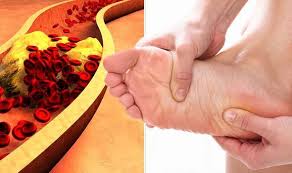
Foot problems can affect people of all ages and can be caused by a variety of factors, including injury, disease, and genetic predisposition. Proper foot care, including regular washing, nail trimming, and wearing appropriate footwear, can help prevent foot problems and promote overall foot health. Foot problems are common and can range from minor issues such as blisters and corns to more serious conditions such as plantar fasciitis, bunions, and neuropathy. Click to find out more.
GALL STONES

The gallbladder is a small pear-shaped organ located on the right side of the abdomen, just under the liver. Its primary function is to store and concentrate bile, a digestive fluid produced by the liver that helps break down fats in the small intestine. When we eat, the gallbladder releases bile through a small tube called the bile duct, which connects the gallbladder to the small intestine. This helps in the digestion of fats and fat-soluble vitamins. Gallstones can develop in the gallbladder when there is an imbalance of substances in the bile, such as cholesterol, bile salts, and bilirubin. These stones can range in size from tiny grains to golf ball-sized masses and can cause symptoms such as pain, nausea, vomiting, and fever. In some cases, if the symptoms are severe or if complications arise, the gallbladder may need to be removed through a surgical procedure called a cholecystectomy. Click to find out more.
GAS PAIN

Gas pain is a common condition that occurs when gas builds up in the digestive system and causes discomfort or pain. The pathophysiology of gas pain involves the normal functioning of the digestive system. When food is consumed, it is broken down into smaller molecules by enzymes in the mouth, stomach, and small intestine. These molecules are absorbed into the bloodstream and transported to the cells of the body for energy. However, some undigested food molecules may pass into the large intestine where they are fermented by bacteria. This fermentation process produces gas as a byproduct, including methane, hydrogen, and carbon dioxide. This gas is normally expelled from the body through belching or flatulence. Click to find out more.
GOUT

Gout is a type of arthritis that results from the buildup of uric acid crystals in the joints. It is characterized by sudden and severe attacks of pain, swelling, and redness in the affected joint, which usually occurs in the big toe, but can also occur in other joints such as the ankle, knee, elbow, wrist, or fingers. Gout occurs when there is an excess of uric acid in the blood, which can be caused by a variety of factors, including genetics, obesity, a diet high in purines, alcohol consumption, and certain medications. Treatment for gout typically involves managing the pain and inflammation associated with an acute attack, as well as addressing the underlying causes of the condition. Click to find out more.
GROUP B STREP

Group B Streptococcus (GBS) is a serious infection caused by type of bacterium that accumulates in the human body, most commonly in the vagina, intestines or rectum. It is estimated that about 30-35% of women have GBS in their bodies, and it can be transferred to the baby during delivery. GBS can cause serious health problems for newborns if left untreated, including pneumonia, meningitis, sepsis and even death. While GBS infection is treatable with antibiotics, prevention is key. All pregnant women should receive screening and immunization to reduce the risks associated with GBS infection in babies. Click to find out more.
GUM DISEASE

Gum disease, also known as periodontal disease, is a bacterial infection that affects the gums and the bone that supports the teeth. It is caused by plaque, a sticky film of bacteria that forms on the teeth and gums. The early stage of gum disease is called gingivitis, which is characterized by red, swollen, and bleeding gums. If left untreated, gingivitis can progress to periodontitis, a more advanced stage of gum disease where the gums pull away from the teeth, forming pockets that can become infected. Over time, periodontitis can lead to tooth loss. Risk factors for gum disease include poor oral hygiene, smoking, genetics, certain medications, hormonal changes, and medical conditions such as diabetes. Preventing gum disease involves maintaining good oral hygiene, including brushing twice a day, flossing daily, and seeing a dentist for regular checkups and cleanings. Treatment for gum disease may include professional cleaning, antibiotics, and surgery in severe cases.
HAY FEVER

Hay fever is a type of allergic reaction, specifically allergic rhinitis, that is caused by exposure to certain allergens such as pollen, mold, dust mites, and pet dander. Hay fever specifically refers to the symptoms that result from an allergic reaction to airborne allergens, allergies can manifest in a range of ways, such as food allergies, insect allergies, or medication allergies. Hay fever also involves an immune system overreaction to a normally harmless substance, resulting in a range of symptoms such as sneezing, runny nose, itchy eyes, rashes, and swelling. Click to find out more.
HEADACHES

Headaches are a common condition that can be caused by a variety of factors, such as tension, dehydration, sinus problems, migraines, or more serious underlying conditions. The symptoms can vary from mild to severe pain, nausea, sensitivity to light or sound, and difficulty concentrating. There are several types of headaches, including tension headaches, migraines, cluster headaches, sinus headaches, and medication overuse headaches. Each type has its own causes, symptoms, and treatment options. Some common treatments for headaches include over-the-counter pain relievers, such as acetaminophen, ibuprofen, or aspirin. In some cases, prescription medications may be necessary. Other treatments can include relaxation techniques, stress management, hydration, and avoiding triggers such as certain foods or activities. It is important to see a doctor if you experience frequent or severe headaches, especially if they interfere with your daily activities or quality of life. Click for more information.
HEARING LOSS

The ear is a complex organ responsible for both hearing and balance. It is divided into three main parts: the outer ear, the middle ear, and the inner ear. Hearing loss occurs when there is damage or impairment to any part of the auditory system, from the outer ear to the brain. The pathophysiology of hearing loss can be classified into two main types: conductive hearing loss and sensorineural hearing loss. The diagnosis of hearing loss typically involves a comprehensive evaluation by an audiologist or hearing healthcare professional. Click to find out more.
Heart Attack

A heart attack is a life-threatening medical emergency that occurs when the blood supply to the heart is suddenly blocked. A heart attack can also be caused by a reduction of blood flow to the heart. The heart is a vital organ in our bodies, and its primary function is to pump oxygenated and nutrient-rich blood around the body, supplying muscles and other organs with what they need to stay healthy. It does this by contracting and relaxing rhythmically, pushing blood into arteries that deliver it all over the body. When someone suffers from a heart attack, this process of pumping is disrupted due to the lack of oxygenated blood reaching the cardiac muscles. Without intervention from medical professionals, this can cause long-term damage or even death. Click to find out more.
Heart Failure

Heart failure, also known as congestive heart failure, is a serious and potentially life-threatening condition in which the heart is unable to pump enough blood to meet the body’s needs. It occurs when the walls of the heart become too weak or stiff to effectively fill with and pump out blood. Heart failure can be caused by a wide range of factors, such as high blood pressure, coronary artery disease, obesity, diabetes and more. The risk of developing heart failure increases with age and can affect both men and women. Symptoms include shortness of breath, persistent coughing or wheezing, fatigue, swelling of the ankles and feet, rapid or irregular heartbeat, nausea, lack of appetite and more. Treatments for heart failure include lifestyle changes (i.e., diet modifications), medications to reduce fluid in your body or improve your heart’s pumping strength along with surgically implanted devices like pacemakers or implantable cardioverter-defibrillators (ICDs). With proper treatment and management, patients can live long productive lives despite their diagnosis. Click to find out more.
Heartburn

Heartburn is a common condition that causes a burning sensation in the chest or throat. It is caused by stomach acid refluxing back into the esophagus, the tube that connects the mouth to the stomach. This reflux can occur when the lower esophageal sphincter (LES), a ring of muscle that separates the esophagus from the stomach, does not close properly or opens too frequently. Heartburn can be triggered by a number of factors, including eating large meals, consuming certain foods or drinks (such as spicy or fatty foods, coffee, or alcohol), lying down after eating, being overweight or pregnant, smoking, and certain medical conditions such as hiatal hernia. Click to find out more.
HEMORRHOIDS

Hemorrhoids, also known as piles, are swollen veins in the lower rectum and anus. They can be internal, which means they are inside the rectum, or external, which means they are under the skin around the anus. Hemorrhoids can be caused by a variety of factors, including straining during bowel movements, chronic constipation, pregnancy, obesity, and sitting for long periods of time. Symptoms of hemorrhoids include pain, itching, bleeding during bowel movements, and a lump or swelling near the anus. Treatment options include lifestyle changes such as increased fiber intake, drinking plenty of water, and exercising regularly. Over-the-counter creams, ointments, and suppositories may also provide relief. In some cases, surgery may be necessary to remove the hemorrhoid. Click to find out more.
HICCUPS

Hiccups are involuntary contractions or spasms of the diaphragm muscle. The diaphragm is a large muscle located between the chest and abdomen that helps with breathing. When the diaphragm spasms, it causes a sudden intake of air into the lungs, which is then quickly closed off by the vocal cords, resulting in the “hic” sound. Hiccups are usually harmless and go away on their own after a few minutes. They can be caused by a variety of factors, such as eating too quickly, drinking carbonated beverages, swallowing air, or sudden changes in temperature. In some cases, hiccups may be a symptom of an underlying medical condition, such as gastroesophageal reflux disease (GERD), nerve damage, or certain medications. Click to find out more.
High Blood Pressure

High blood pressure is a serious medical condition that affects many people around the world. It occurs when the force of blood pushing against the artery walls is too high, which can lead to health complications such as heart attack, stroke, and kidney disease. High blood pressure is often caused by unhealthy lifestyle factors such as improper diet and lack of physical activity, although underlying medical conditions like diabetes and thyroid problems can also contribute to its onset. In addition, genetics and family history can play an important role in determining one’s risk for developing this condition. Fortunately, with regular monitoring and lifestyle changes to mitigate risk factors like obesity, smoking, and excessive alcohol consumption, high blood pressure can be managed effectively. Click to find out more.
HIGH CHOLESTEROL

High cholesterol is a common health concern that affects millions of people worldwide. With the modern lifestyle and unhealthy eating habits, it’s no surprise that high cholesterol levels have become a prevalent issue. But what exactly is cholesterol, and why is it so important to keep it under control? In this article, we will explore the definition of cholesterol, the causes of high cholesterol, and the potential risks associated with it. Additionally, we will discuss the importance of maintaining healthy cholesterol levels and provide practical tips to help you achieve this goal. By the end of this article, you will have a better understanding of high cholesterol and its impact on your health. Click for more information.
INSOMNIA

Insomnia is a common sleep disorder that affects millions of people worldwide. It is characterized by difficulty falling or staying asleep, waking up too early, or feeling tired upon waking up. Insomnia can be acute or chronic and can have a significant impact on a person’s quality of life. Insomnia can be caused by a variety of factors, including stress, anxiety, depression, medications, caffeine, alcohol, and environmental factors such as noise, temperature, or light. It can also be a symptom of an underlying medical condition, such as sleep apnea, restless leg syndrome, or chronic pain. Click for more information.
IBS

Irritable bowel syndrome (IBS) is a chronic digestive disorder that affects the large intestine. It is characterized by recurrent abdominal pain, cramping, bloating, gas, changes in bowel habits (constipation and/or diarrhea). IBS can have a major impact on one’s quality of life. It is estimated that 10-15% of the general population suffers from IBS. Although the exact cause of IBS is unknown, it is thought to be related to a variety of factors including psychological stress, food sensitivities, and genetic predisposition. Common symptoms of IBS include abdominal pain, cramping, bloating, flatulence, constipation, and diarrhea. Treatment for IBS is often focused on managing the symptoms, such as dietary modifications and lifestyle changes. However, understanding the underlying pathophysiology and exploring the various treatment options available are important to consider when managing IBS. Click to find out more.
KIDNEY DISEASE
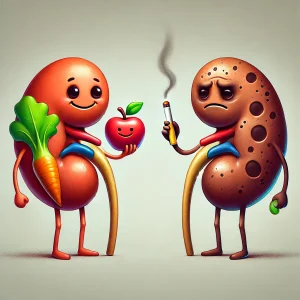
The kidney is one of the most important organs in the human body. It plays a vital role in maintaining our overall health and well-being. The kidney is a bean-shaped organ located in the abdominal cavity. It is approximately the size of a fist and weighs around 120-150 grams. Each person has two kidneys, one on each side of the spine. The kidney is made up of millions of tiny filters called nephrons, which are responsible for filtering the blood. The kidney works by filtering waste products from the blood and removing excess fluids from the body. The nephrons in the kidney filter the blood by removing waste products such as urea, creatinine, and excess salts. These waste products are then excreted from the body in the form of urine. Click to find out more.
Kidney Failure

Kidney failure is a medical condition in which the kidneys no longer function optimally to perform their essential functions, leading to a build-up of waste and fluid in the body. Consequently, the kidneys are unable to remove waste substances from the blood. The kidneys are two bean-shaped organs located at either side of the back, below the rib cage. Their primary role is to filter excess fluid, electrolytes and waste from our blood and excrete them through urine. In addition, they help to regulate our body’s hormones and control blood pressure. When kidney failure occurs, these vital functions are reduced or completely stopped, leading to serious health complications. Click to find out more.
MINOR WOUNDS

The disruption in the integrity of the skin. Wounds are a common occurrence in everyday life. They can range from minor scrapes and cuts to more serious lacerations and puncture wounds that require medical attention. Wounds can be caused by a variety of factors including accidents, falls, or medical procedures. Proper wound care is essential for proper healing and to reduce the risk of infection. It is important to be aware of the signs and symptoms of a wound in order to determine the best course of action for treatment. Click to find out more.
MOUTH PROBLEMS

Mouth lesions are common medical disorders that can range from minor abrasions to more serious chronic conditions. They can be caused by a variety of factors, such as physical trauma, viral or bacterial infections, systemic diseases, and certain medications. Depending on the cause and severity of the condition, mouth lesions may appear as ulcers, blistering sores, lumps or bumps on the tongue, gums or inner lining of the mouth. Patients may experience persistent pain and discomfort in the affected area along with additional symptoms like bleeding when brushing teeth or eating. It is important to consult a healthcare professional for an accurate diagnosis and appropriate treatment plan. Click to find out more.
POST TRAUMATIC STRESS DISORDER

Post-Traumatic Stress Disorder is a condition that can affect anyone who has experienced a traumatic event or life-threatening situation. It can manifest itself in physical, mental, and emotional symptoms that can range from mild to severe. People who suffer from PTSD can experience flashbacks, nightmares, anxiety, depression, and avoidance of situations or people that remind them of their trauma. Treatment for PTSD typically includes therapy, medication, and lifestyle changes. Click to find out more.
Rash

Rash is a skin condition that can be caused by many different things, from allergies to viruses. It usually presents as a red, itchy rash on the skin, although it can vary in size, shape, and intensity. While some causes of rash are harmless, others can be more serious. It is important to seek medical advice if you are not sure what is causing your rash, as some conditions can be contagious or even life-threatening. Click to find out more.
Seizure Disorder

Seizure disorder, or epilepsy, is a neurological condition that causes recurrent seizures. Seizures are episodes of disrupted electrical activity in the brain, which can cause physical symptoms, alter consciousness, and even changes in behavior. Seizures are usually caused by an imbalance of electrical activity in the brain. Treatment options for seizure disorder typically include medications to control the seizures, diet and lifestyle changes, and in some cases, surgery. It is important to talk to your doctor to develop an individualized treatment plan for seizure disorder. Click to find out more.
Snake Bite

Snake bites are a serious health problem in many parts of the world. Around 5 million people are bitten by venomous snakes each year, leading to approximately 100,000 deaths annually. In the United States alone, over 7,000 cases of venomous snake bites are reported every year and around five of these result in death. Snake bite is a potentially life-threatening injury that mostly occurs due to handling with bare hands or stepping on snakes. Symptoms can range from minor local tissue damage to major systemic effects such as organ failure and paralysis. Treatment may include antivenom and supportive care; however, prevention is the best means of avoiding this condition. Education regarding proper snake handling techniques and avoidance measures should be taken into consideration when living or working in areas populated by venomous reptiles. Click to find out more.
Sprain
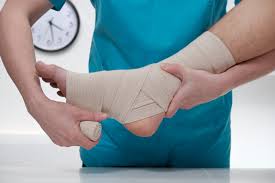
Sprains are injuries to ligaments, the tough bands of tissue that connect bones and provide stability to joints. Sprains occur when these ligaments are stretched beyond their normal range of motion or torn. The most common type of sprain occurs in the ankle, when the foot is twisted outward resulting in a tear of the lateral ligaments on the outside of the ankle. Foot sprains can be very painful and usually require medical attention to reduce swelling, improve mobility and prevent further damage to other structures in the joint. They can also cause long-term problems if not treated properly such as instability and chronic pain. Proper treatment may include rest, immobilization, physical therapy, anti-inflammatory medications and/or surgery, depending on the severity of the injury. Click to find out more.
Stroke

A stroke is a medical emergency that occurs when the blood supply to part of the brain is interrupted or severely reduced, depriving it of oxygen and nutrients. This can cause permanent brain damage, long-term disability, or even death. Strokes can be caused by either a blocked artery (ischemic stroke) or the leaking or bursting of a blood vessel (hemorrhagic stroke). Signs and symptoms of a stroke vary depending on the type, but may include sudden numbness in the face, arm or leg; confusion; difficulty speaking; difficulty seeing in one or both eyes; dizziness; loss of balance or coordination; and severe headache. If someone experiences any of these symptoms, they should seek medical attention right away as early treatment can help reduce lasting effects. Click to find out more.
Substance Abuse

Substance abuse is a growing problem across the United States and beyond. It refers to the misuse of drugs or alcohol in a way that can cause physical, mental, or emotional harm. Substance abuse can lead to serious health risks such as liver disease, depression, and even death. It also has far-reaching consequences on relationships, families, and communities. According to recent reports from the National Institute on Drug Abuse (NIDA), approximately 20 million Americans over 12 years old have misused illicit drugs at least once in the past month. Additionally, more than 88,000 people die each year due to alcohol-related causes. Even more concerning are the effects that substance abuse has on children: according to NIDA’s 2019 survey, 8% of 8th graders had misused an illicit drug in the past year alone. This data reveals just how pervasive substance abuse has become and underscores the need for greater awareness and intervention efforts. Click to find out more.
Suicide

Suicide is a global health crisis that affects people of all ages and backgrounds. It is an incredibly complex issue, with both physical and psychological components, which can have grave consequences for individuals and the societies in which they live. The World Health Organization has estimated that close to 800,000 people die from suicide every year, making it one of the leading causes of death globally. According to the Centers for Disease Control and Prevention, suicide rates among American adults have increased by 33% since 1999. Furthermore, research indicates that suicide attempts are significantly more common than completed suicides, with one study estimating that there are 25 attempted suicides for each death by suicide. These alarming statistics highlight the importance of understanding and addressing the risk factors associated with suicide in order to prevent further deaths. Click to find out more.
Surgery

Surgery is a field of medicine that focuses on the operative treatment of diseases, injuries, and deformities. It is an integral part of healthcare, providing treatments for a wide variety of conditions ranging from minor cuts to major organ transplants. Surgeries can be incredibly complex and range from minimally invasive procedures to extensive operations utilizing advanced medical technology. They require precise skill and an insistence upon high standards of safety in order to ensure the best possible outcome for the patient. As such, surgeons must undergo rigorous training before they are able to perform surgeries. Click to find out more.
Unconscious Person

An unconscious person is someone who is in a state of complete or partial lack of awareness and unable to respond normally to external stimuli. In this state, the individual is unable to respond to commands and may remain unresponsive even when stimulated. Medical professionals often refer to this condition as altered or decreased level of consciousness. Unconsciousness can be caused by a variety of factors including trauma, dehydration, illness, stroke, head injury, drug overdose or poisoning. Depending on the cause and severity of the condition, a person may regain consciousness after a period of time or remain unconscious for an extended duration that could lead to permanent physical or mental damage. It is therefore important for medical professionals to diagnose and treat an unconscious patient quickly and efficiently. Click to find out more.
uRINARY TRACT INFECTION

The urinary tract is a system of organs that store and excrete urine, a fluid waste product of the body. It includes the kidneys, ureters, bladder, and urethra. Urinary tract infections (UTIs) occur when bacteria or other microorganisms enter the bladder or urethra, leading to symptoms such as pain in the lower abdomen and frequent urge to urinate. Urinary incontinence is an inability to control one’s bladder, resulting in involuntary loss of urine or leaking. It can be caused by weakened pelvic muscles as a result of childbirth or menopause, nerve damage from surgery or injury, certain medications, obesity, or another underlying health condition. Treatment for UTIs generally involves antibiotics while urinary incontinence requires lifestyle modifications such as weight loss and Kegel exercises as well as sometimes medication or even surgery to strengthen weak muscles around the bladder. Click to find out more.
Vomiting

Vomiting is an unpleasant process that many people experience at some point in their lives. It occurs when the stomach contents are forcefully expelled through the mouth as a result of contractions in the digestive tract muscles. Vomiting is often associated with nausea, which is a feeling of uneasiness or discomfort that can lead to an urge to vomit. It can also be caused by a variety of conditions and diseases, such as food poisoning, motion sickness, gastritis, peptic ulcer disease and gastroenteritis. Certain medications, alcohol consumption, and pregnancy can also cause vomiting. Other causes include brain tumors and infections like meningitis or encephalitis. Although it can usually be treated with simple home remedies such as drinking plenty of fluids and eating bland foods, severe cases may require medical attention. Click to find out more.
What to Expect at the ER

Visiting the emergency room (ER) can be a stressful experience. From long waiting times to dealing with an unexpected medical issue, preparing to go to the ER can seem overwhelming. However, it is important to know what you should expect when visiting the ER so you can be best prepared for your visit. Generally speaking, patients can expect a review of their symptoms, a physical exam or diagnostic tests, and treatment options from the ER physician. Depending on the severity of your condition, you may be sent home with follow-up care instructions or be admitted into the hospital for more specialized care. Each visit is different and depends on your individual needs and circumstances. Be sure to have any medical records and insurance information available if possible. Having this information ready will help ensure that your visit runs smoothly and quickly. Click to find out more.
Wound Care

Wound care is an important part of medical practice, requiring the application of specialized knowledge and skills. It involves a range of medical treatments to successfully manage and treat wounds, from small cuts and scrapes to more serious lacerations, burns, chronic ulcers, and bite wounds. Wound care professionals must consider various factors such as wound type, size/depth, location on the body, healing progress, underlying medical conditions in order to determine the best course of action for each individual patient. The goal of proper wound care is to ensure timely healing with minimal scarring and limited risk of infection. This includes the use of dressings that absorb fluids, control temperature, provide protection against bacteria and provide cushioning for the wound area. Additionally, wound care can include surgical procedures such as debridement or skin grafting. Taking good care of a wound is essential for it to heal quickly and properly; this requires a concerted effort between patient and provider. Click to find out more.

